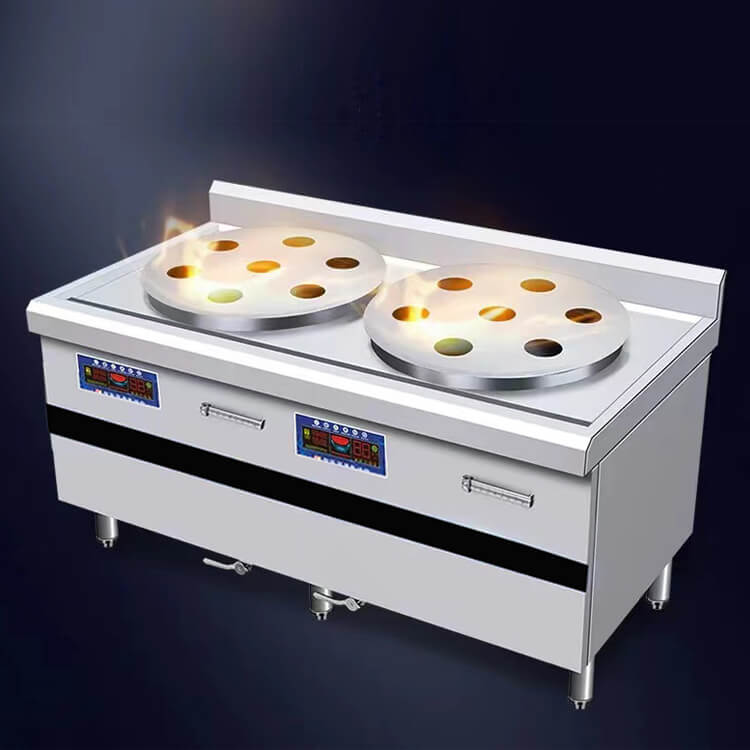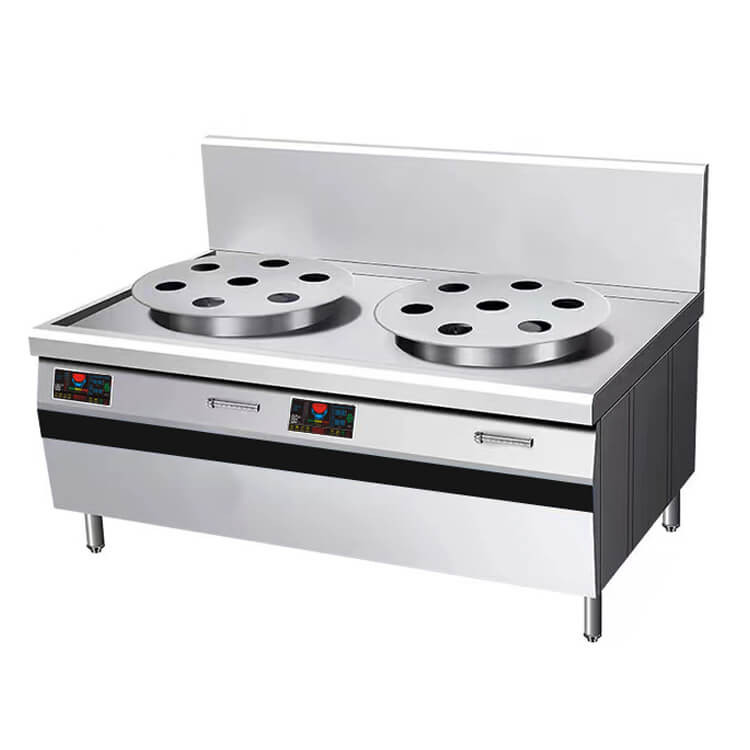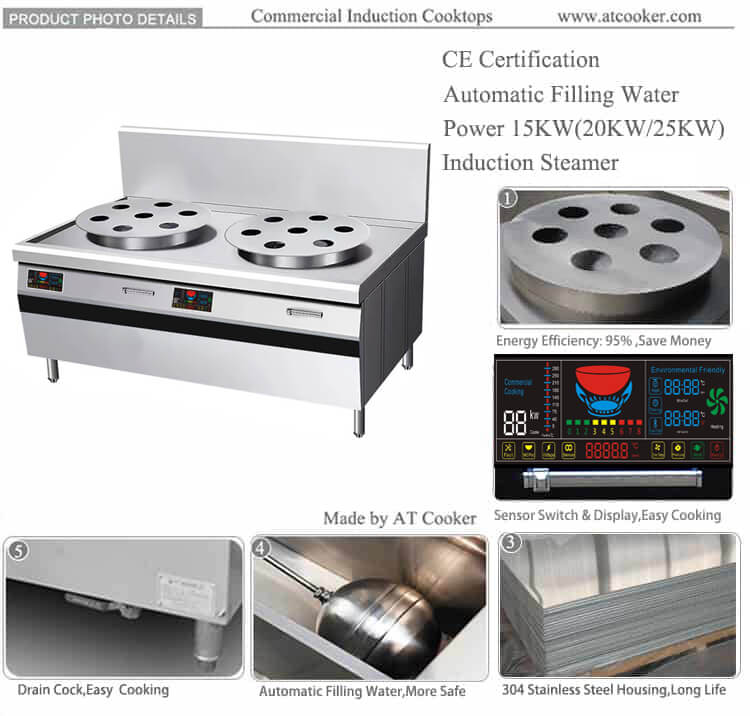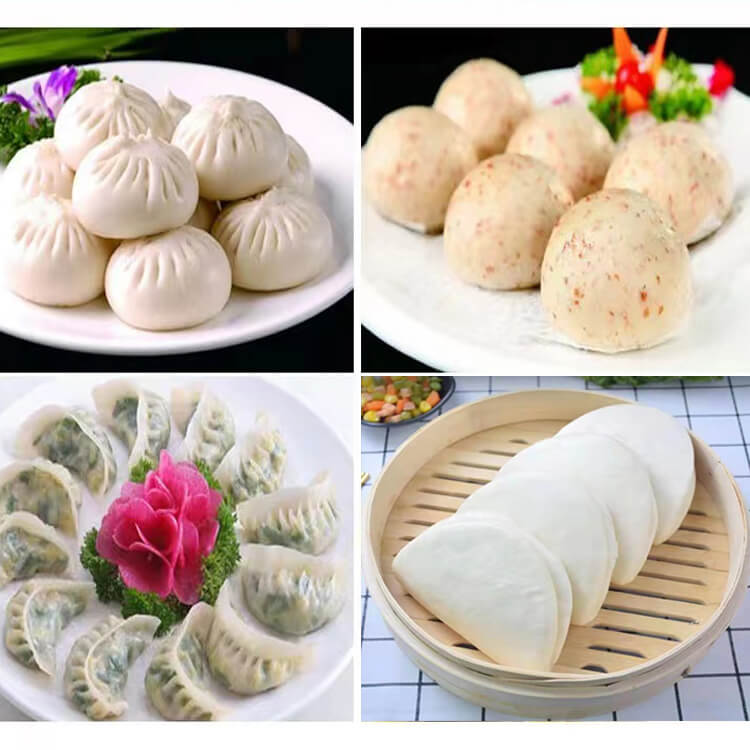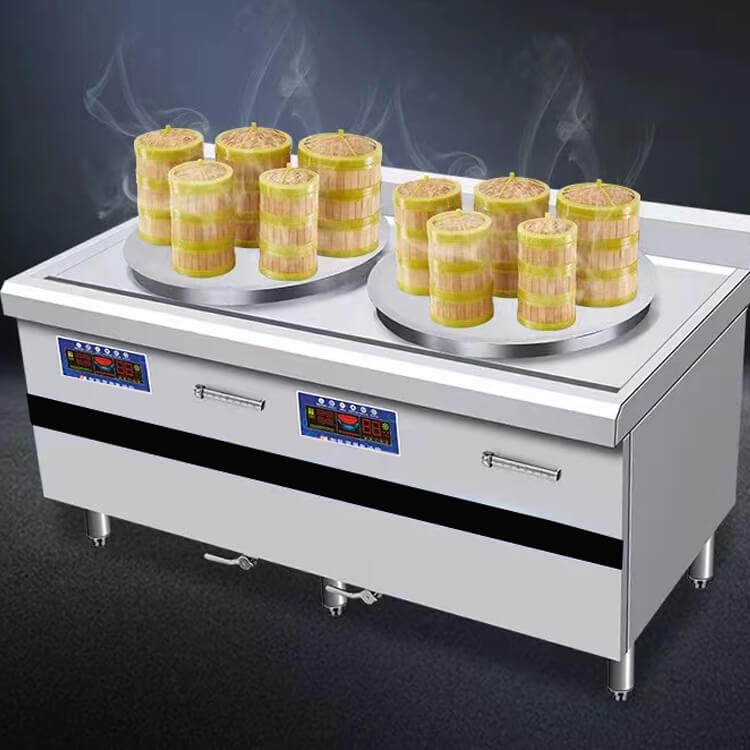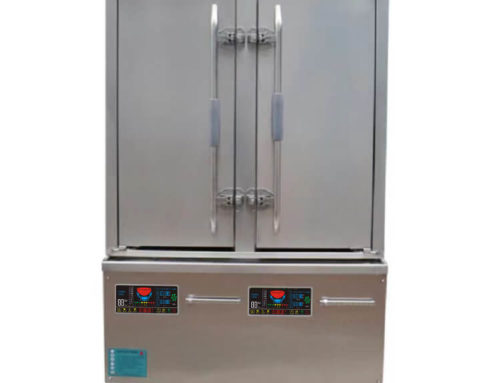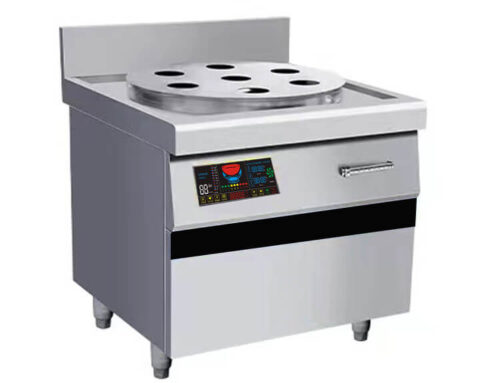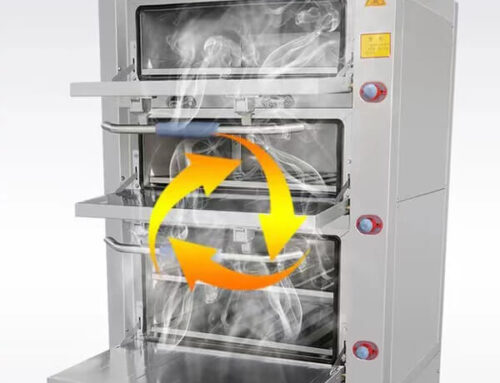Proper installation with correct drain sizing is essential, as undersized drain lines or escaping steam can damage nearby equipment.
A successful installation of your commercial bao steamer begins long before it is powered on. The foundational step is ensuring the drain line is correctly sized and installed. An undersized drain cannot handle the volume of condensate produced during peak operation, leading to overflows. This escaping steam and water is not merely a mess; it creates a significant hazard. The constant moisture can degrade cabinetry, cause electrical shorts in adjacent equipment, promote mold growth, and create slippery floors. According to the International Plumbing Code (IPC), drain lines for steam equipment must be sized to handle the maximum anticipated discharge rate. For most commercial bao bun steamer units, a minimum 1-inch drain line is recommended, but always consult the manufacturer’s specifications from your commercial bao steamer factory to be certain. Proper sloping of the drain line away from the unit is equally critical to prevent pooling and backflow.
Type II (condensate) hoods are required over steam-generating equipment, capturing moisture and heat without needing grease removal, unlike Type I hoods.
Ventilation is non-negotiable, and using the correct type of hood is a critical code requirement. Over your commercial bao steamer, you must install a Type II (condensate) hood. It is crucial to understand the difference: Type I hoods are designed to capture grease, smoke, and combustion products from cooking equipment like fryers and griddles. They are equipped with grease filters and require specific fire suppression systems. A commercial bao bun steamer, however, produces vast amounts of steam and moisture, not grease-laden vapors. A Type II hood is specifically engineered to capture this moisture and heat, preventing it from condensing on ceilings, walls, and other kitchen surfaces, which can lead to structural damage and mold. As noted by the NFPA 96 standard, using the wrong hood type is a common violation and a serious safety risk.
Exhaust systems must provide makeup air, maintaining proper ventilation balance and preventing negative kitchen pressure.
An exhaust hood cannot function effectively in isolation. For every cubic foot of air your ventilation system removes from the kitchen, a cubic foot must be brought back in. This is known as makeup air. If your exhaust system is powerful but the makeup air system is inadequate, it creates negative pressure within the kitchen. This imbalance causes a host of problems: doors become difficult to open, drafts can blow out pilot lights on other gas equipment, and worst of all, the commercial bao steamer‘s hood will be unable to capture effluent effectively, allowing steam to escape into the kitchen. Properly balanced makeup air, often tempered to avoid creating drafts, is essential for employee comfort, equipment operation, and safety. Reputable commercial bao steamer manufacturers will always emphasize this requirement during the planning stages of a kitchen installation.
Ventilation components (hoods, filters, ducts) require cleaning and inspection at regular intervals, typically quarterly or semi-annually, depending on cooking volume.
Your ventilation system is a critical asset that requires scheduled maintenance. While a Type II hood does not deal with grease, it does capture mineral particles and moisture, which can lead to buildup and corrosion. The filters inside the hood should be removed and cleaned regularly—often weekly—to ensure optimal airflow. The hood interior, ducts, and exhaust fan should be professionally inspected and cleaned at intervals specified by your insurance provider and local code, typically quarterly for high-volume operations and semi-annually for lower-volume establishments. This prevents obstructions that reduce efficiency and become a fire hazard. A study by the National Restaurant Association highlights that poor ventilation maintenance is a leading contributor to kitchen fires. Keeping a maintenance log is a best practice recommended by all major commercial bao steamer factory providers.
Scale (limescale) buildup rapidly degrades steamer components, potentially causing corrosion or failures in just 3–4 months if not addressed.
This is the single greatest threat to the longevity of your commercial bao steamer. Scale, or limescale, is the hard, chalky deposit that forms when minerals in water (primarily calcium and magnesium) precipitate out as the water is heated and evaporates. Inside a steamer, this scale coats heating elements, sensors, and tank walls. This insulating layer forces the heating element to work harder and longer to achieve temperature, drastically increasing energy costs and eventually causing the element to burn out. Scale buildup can also clog water inlet valves and small orifices in the steam system. In areas with very hard water, a neglected commercial bao bun steamer can experience complete component failure, such as a burned-out boiler or corroded tank, within a few months. Proactive water treatment is not a suggestion; it is a necessity for protecting your investment.
Routine descaling and drain-line clearing are critical; daily cleaning of the cooking chamber (e.g., using vinegar solution) helps prevent mineral residue buildup.
A rigorous cleaning routine is your first line of defense against scale. Descaling is the process of removing existing mineral deposits. The frequency depends on your water hardness and usage, but it should be performed as per the schedule in your manual, often monthly. This typically involves circulating a descaling solution (usually a food-grade acid like citric acid or a mild vinegar solution) through the steamer’s system to dissolve the scale. Drain-line clearing should be part of this process to prevent clogs from dislodged scale. Beyond scheduled descaling, the cooking chamber should be wiped down daily with a soft cloth and a mild acid solution (e.g., a 50/50 water and white vinegar mix). This daily practice prevents mineral residue from baking on and hardening, making the major descaling jobs much easier and more effective. Leading commercial bao steamer manufacturers provide detailed descaling protocols specific to their models.
Water quality must be managed proactively using water softeners or filtration (charcoal or RO) to control hardness and TDS before damage occurs.
Treating the water before it enters your commercial bao steamer is the most effective long-term strategy. There are two primary approaches:
Water Softeners: These ion-exchange systems are highly effective at removing the calcium and magnesium ions that cause hardness, dramatically reducing scale formation. They are the preferred solution for kitchens with hard water sources.
Filtration Systems: Carbon filters remove chlorine and other impurities that can affect taste and odor. Reverse Osmosis (RO) systems are extremely effective at removing a very high percentage of Total Dissolved Solids (TDS), producing very pure water. However, as noted in the next section, using 100% RO water is not advisable.
A water test is the first step. Many commercial bao steamer factory advisors recommend installing a point-of-use water treatment system specifically for your steamer to ensure consistent water quality and maximize the equipment’s lifespan.
Never use deionized, distilled, or RO water alone, as these can disrupt sensor functioning or cause equipment errors—balanced TDS (15–40 ppm) is required.
While removing minerals is good, removing all of them is problematic. Pure water—such as deionized, distilled, or water straight from an RO system—has very low electrical conductivity. Many modern commercial bao bun steamer units use conductivity probes or other sensors to detect water levels. These sensors require water with some mineral content (TDS) to conduct a small electrical current and function correctly. Using 100% pure water can “confuse” these sensors, leading to errors like false low-water alarms or failure to initiate a heating cycle. Therefore, the goal is not zero TDS, but a controlled, balanced TDS level. Most equipment commercial bao steamer manufacturers specify an ideal TDS range of 15-40 parts per million (ppm). This can be achieved by blending RO water with a small percentage of tap water or using a re-mineralization filter post-RO.
Ensure easy access to ventilation system components—filters, ducts, and fans—to simplify inspection and cleaning, per IMC/NFPA code.
Accessibility is a key principle in commercial kitchen design, mandated by codes like the International Mechanical Code (IMC) and NFPA 96. All components of the ventilation system, including the hood filters, the plenum inside the hood, the ductwork, and the exhaust fan on the roof, must have adequate access panels and clearance for inspection and cleaning. If a cleaner cannot easily reach a duct section, it will not be cleaned properly, creating a fire risk and hygiene issue. When planning your kitchen layout around your commercial bao steamer, ensure there is sufficient space above and around the hood for service personnel to work safely and effectively. This foresight during installation will reduce maintenance costs and ensure compliance for years to come.
Avoid harsh chemicals or abrasives when cleaning interior surfaces, as these can scratch or compromise stainless steel—opt for soft brushes, vinegar, and mild cleaners.
The interior of your steamer is typically made of high-quality, corrosion-resistant stainless steel. preserving this surface is vital for hygiene and longevity. Abrasive scrub pads, steel wool, or harsh chemical cleaners can microscopically scratch the polished surface of the steel. These tiny scratches become breeding grounds for bacteria and make the surface more susceptible to corrosion and staining over time. Always use soft cloths, nylon brushes, and non-abrasive sponges. For daily cleaning, warm water with a mild detergent or a vinegar solution is sufficient. For tougher jobs, use a cleaner specifically formulated for stainless steel in food service environments. This gentle approach will keep your commercial bao bun steamer looking new and operating in a hygienic manner.
Include gasket care in daily routines: clean, rotate, and air-dry to extend gasket life and maintain hygiene.
The door gasket is a simple but crucial component. This rubber seal ensures the cooking chamber remains pressurized with steam. If it fails, the steamer will leak energy and operate inefficiently. To maximize its life, incorporate gasket care into your closing routine. Wipe it down with a damp cloth to remove any food residue or moisture. Periodically, check that it is seated correctly and hasn’t become compressed or misshapen. Some models allow you to rotate the gasket to distribute wear evenly. Most importantly, after cleaning, leave the steamer door slightly ajar to allow the gasket and the entire interior to air-dry completely. This prevents the growth of mildew and bacteria on the gasket surface, ensuring hygiene and preventing premature degradation of the rubber. This small daily habit, emphasized by knowledgeable commercial bao steamer manufacturers, can prevent costly replacements and downtime.
